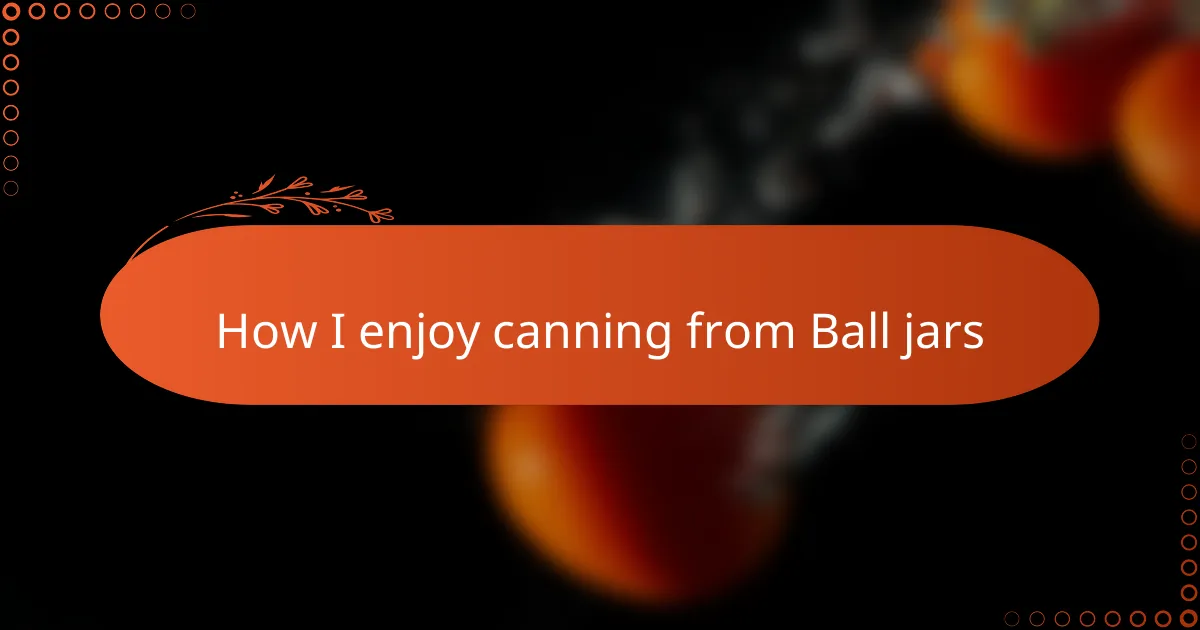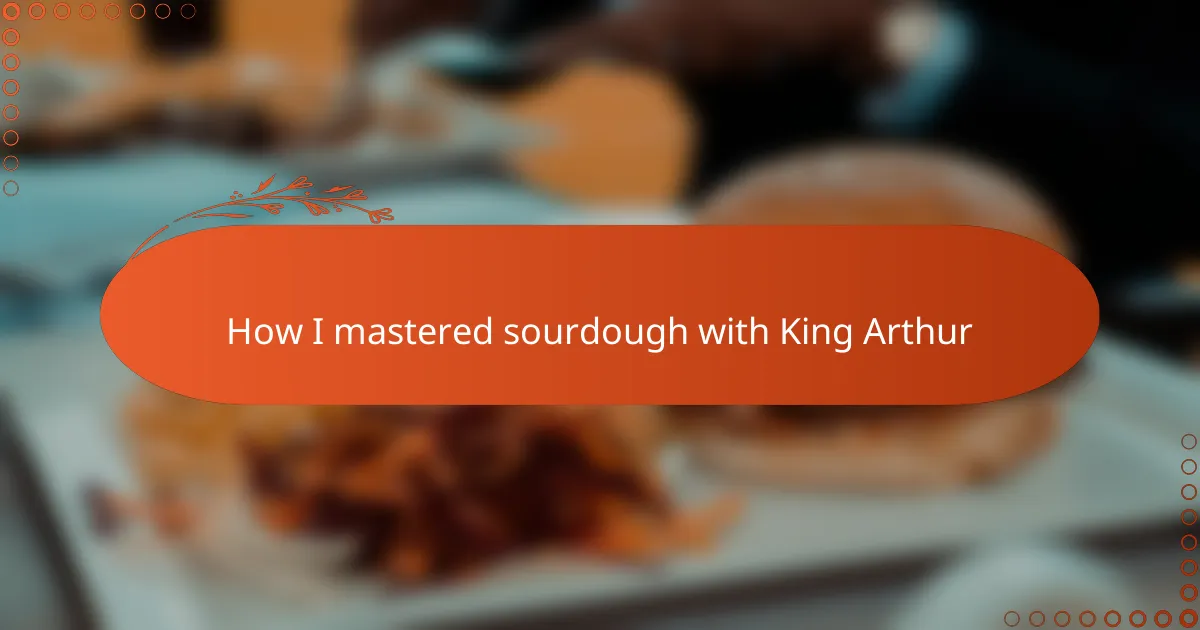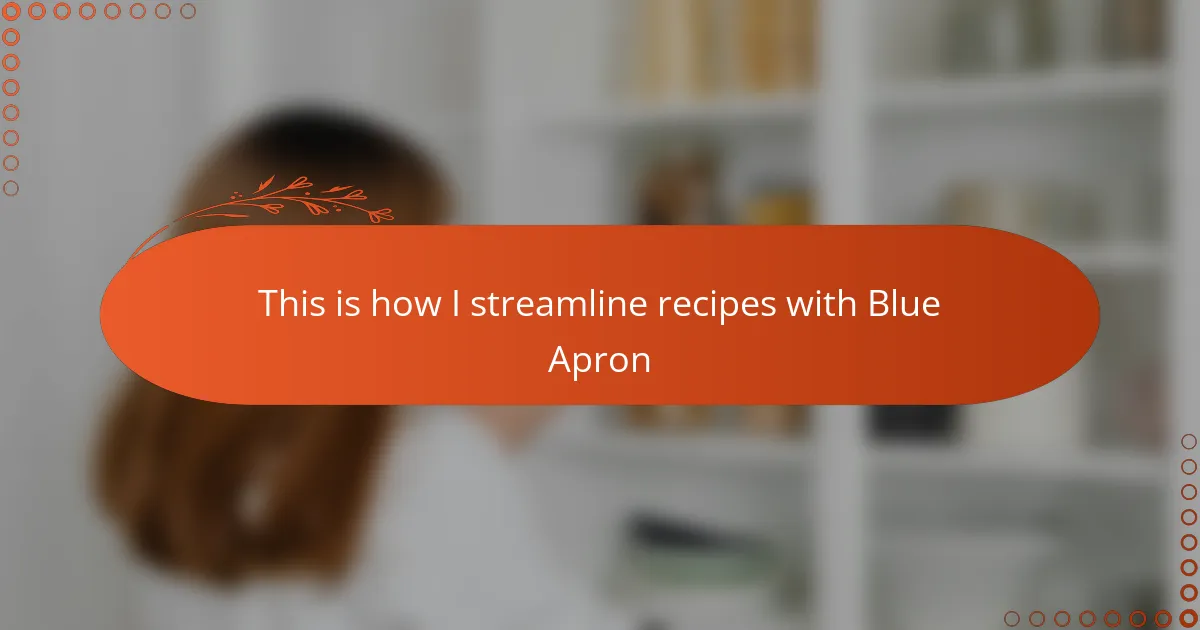Key takeaways
- Homesteading cooking fosters a deep connection with food, making each dish meaningful.
- Le Creuset cookware offers durability, consistent heat distribution, and versatility, enhancing the cooking experience.
- Practical tips include avoiding sudden temperature changes and using wooden or silicone utensils to preserve the enamel’s finish.
- Proper maintenance, such as hand washing and careful storage, is crucial for maintaining the longevity and appearance of Le Creuset cookware.
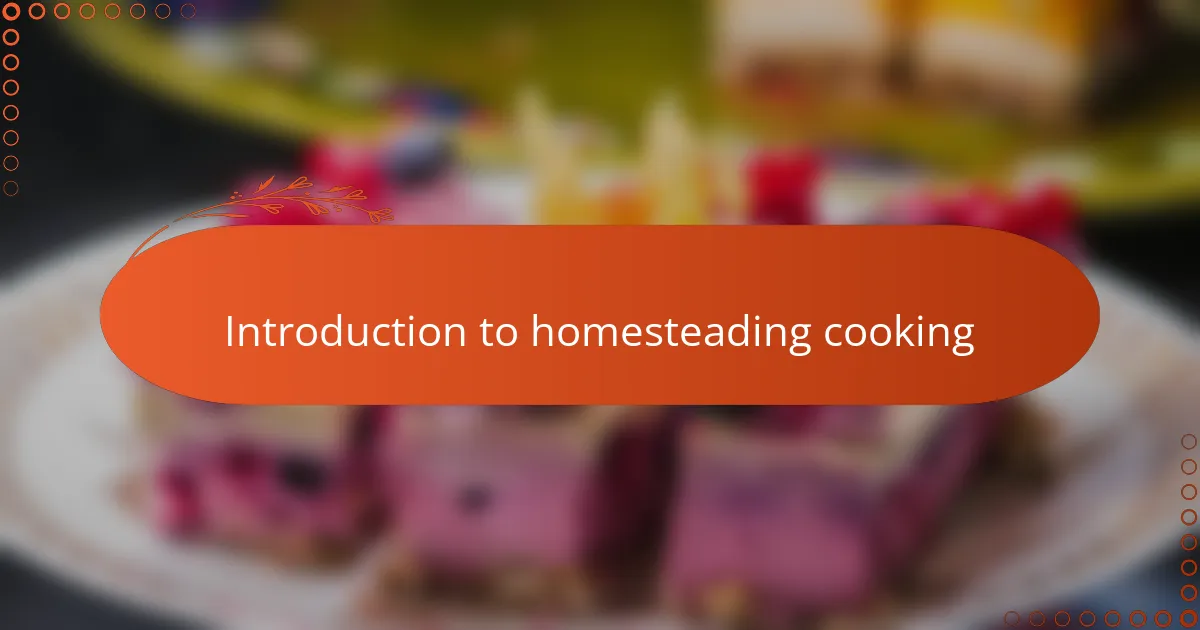
Introduction to homesteading cooking
Homesteading cooking has always felt like a return to the roots for me—a way to connect deeply with the food I prepare and the ingredients I source. There’s something incredibly satisfying about turning simple, fresh produce into a meal that nourishes both body and soul. Have you ever noticed how cooking on a homestead makes each dish feel more meaningful, almost as if the food tells a story?
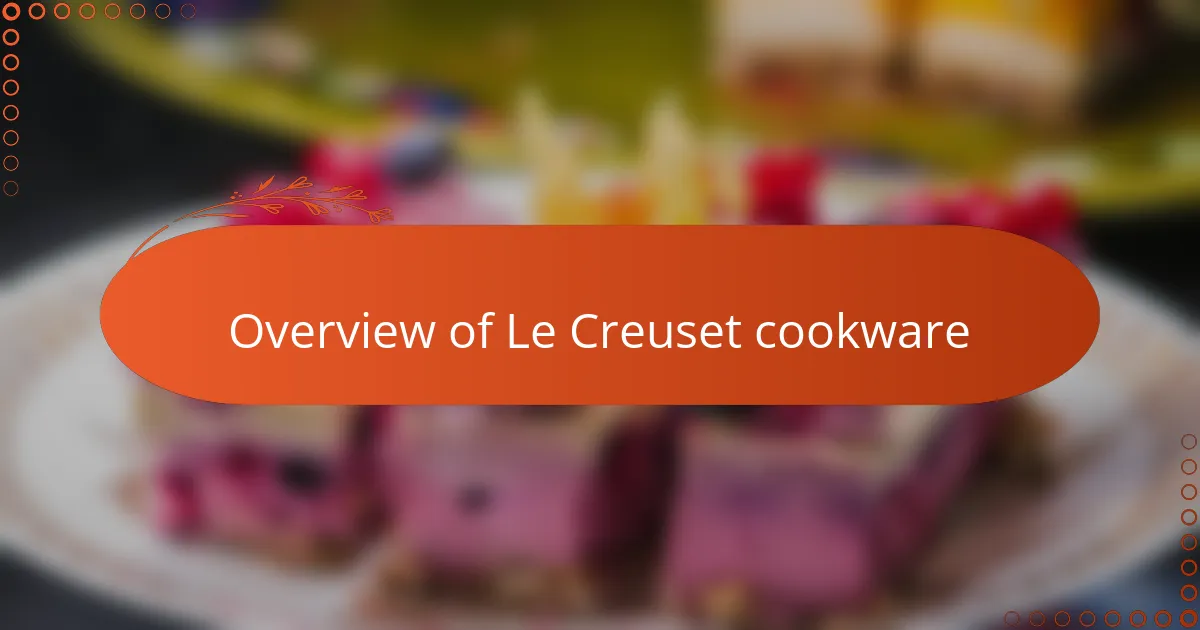
Overview of Le Creuset cookware
Le Creuset cookware has always struck me as more than just kitchen tools—they feel like trusted companions in my cooking journey. Their vibrant enameled cast iron pieces not only brighten up my kitchen but also deliver consistent, even heat that turns rustic recipes into memorable meals. Have you ever experienced that satisfying moment when your pot heats perfectly, and the aroma of a slowly simmering stew fills the air?
What I appreciate most about Le Creuset is the durability; these pots seem to grow more valuable with every use, becoming almost heirloom pieces in my collection. From braises to baking bread, the versatility is impressive—it’s like having a reliable friend who adapts to whatever cooking adventure I’m on. Does your cookware inspire confidence like that?
I also find the brand’s colors uplifting—they add a cheerful touch to the kitchen, making the cooking process feel more joyful. In my experience, cooking with Le Creuset isn’t just practical; it’s a way to connect emotionally with what’s happening on the stove, turning daily tasks into moments of creativity and care.

Benefits of cooking with Le Creuset
There’s something about the way Le Creuset cookware holds and distributes heat that makes a real difference in cooking. I remember the first time I braised a pork shoulder in my Dutch oven—the meat turned out tender and flavorful in a way I hadn’t achieved before. Have you ever experienced how even heat transforms a dish from good to unforgettable?
Another benefit I’ve grown to cherish is durability. Over the years, my Le Creuset has become a trusted kitchen companion that withstands the daily rhythm of homestead cooking. It’s not just a pot; it’s like an old friend that gains character with every use. Isn’t it comforting to know your cookware will last through countless meals and stories?
Lastly, the ease of cleaning and maintaining these enameled pieces truly enhances the cooking experience for me. Unlike other heavy cookware, the smooth surface means I spend less time scrubbing and more time enjoying the process and the company at the table. Don’t we all appreciate a kitchen tool that respects our time and effort?
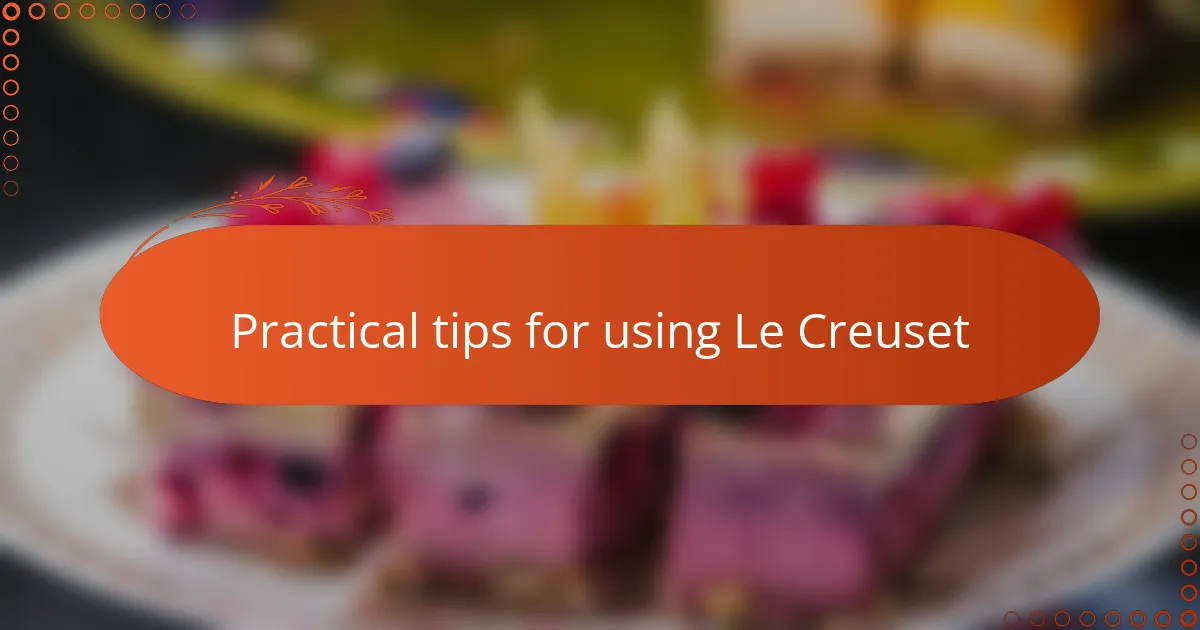
Practical tips for using Le Creuset
One practical tip I’ve learned is to avoid sudden temperature changes with Le Creuset. For instance, I once poured cold water into a hot Dutch oven, and it caused a little crack in the enamel. Since then, I’ve made it a habit to let the pot cool down before washing or adding cold ingredients. Have you ever experienced that shock when your trusty cookware needs a break?
Another thing that helps me is using wooden or silicone utensils to preserve the enamel’s smooth surface. I’ve noticed that metal can cause tiny scratches over time, which takes away from that beautiful glossy finish. It’s a small detail, but it keeps the pot looking as vibrant as the day I first brought it home.
Lastly, I always preheat my Le Creuset slowly over medium heat. Rushing the heating process hasn’t served me well—I found the best results come when the cast iron warms evenly, allowing for perfect searing and simmering. Have you tried this approach? It’s made a noticeable difference in my meals.
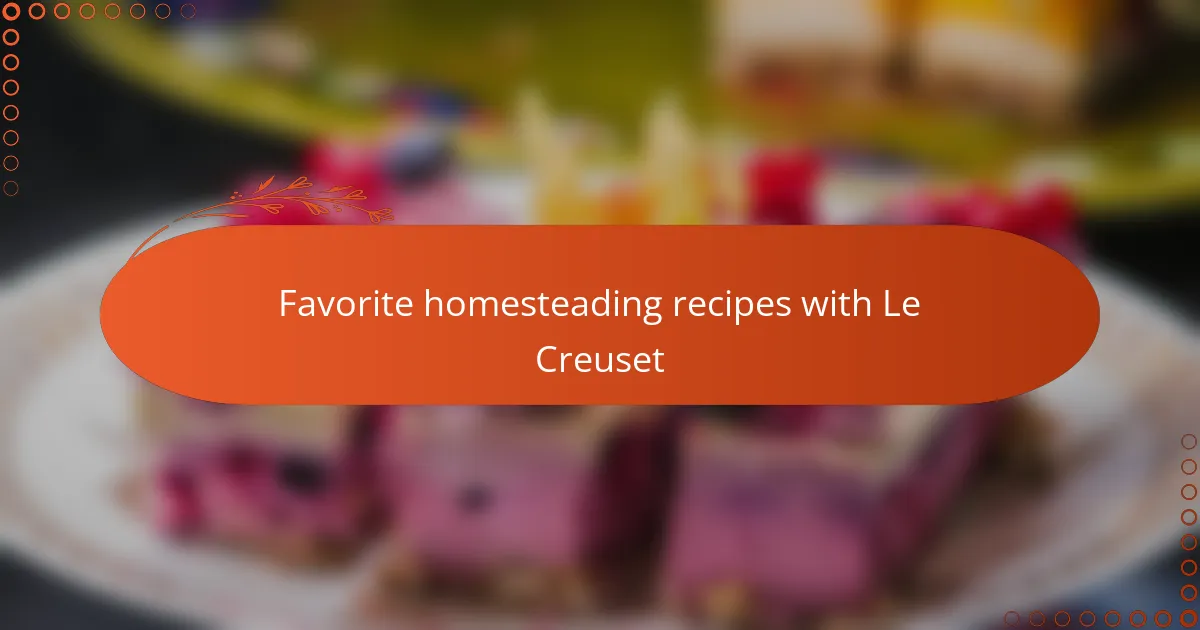
Favorite homesteading recipes with Le Creuset
When it comes to homesteading recipes, my Le Creuset Dutch oven truly shines with classic dishes like beef stew and rustic vegetable soups. There’s something special about how the even heat coaxed out rich, deep flavors during those long, slow cooks—it turns humble ingredients into a bowl full of comfort. Have you ever noticed how a well-braised stew just feels like a warm hug on a cold day?
One of my absolute favorites has to be the no-knead bread baked right in the enameled cast iron pot. The thick walls create the perfect crust, while keeping the crumb soft and airy inside. It feels like a small celebration every time I lift the lid to reveal that golden loaf fresh from the oven. Doesn’t fresh homemade bread seem to capture the essence of homesteading better than anything else?
Lately, I’ve also been experimenting with one-pot chicken and root vegetable dishes, where the Le Creuset pot doubles as both stovetop and oven vessel. The versatility makes cleanup easier, and the flavors meld together beautifully as everything cooks gently under the lid. Isn’t it amazing how the right cookware can turn everyday meals into something worth savoring?

Personal experiences and results
Using my Le Creuset has truly transformed how I approach cooking on the homestead. I recall one chilly evening when I slow-cooked a lamb stew that came out so tender and flavorful, it felt like the pot itself had infused the dish with care and warmth. Have you ever had a meal that made you pause, realizing that your cookware played a starring role in the magic?
I’ve noticed that the results don’t just stop at taste. The consistent heat distribution means nothing ever burns or sticks, which has saved me from countless kitchen mishaps. It’s like the pot knows exactly how to nurture each recipe—doesn’t that kind of reliability take some pressure off the cook’s shoulders?
Over time, my Le Creuset has become more than a tool; it holds memories of family dinners and cozy nights by the stove. Each chip or stain feels like a badge of honor, showing how much this cookware and I have been through together. Have you ever felt that kind of attachment to a kitchen item that goes beyond its function?
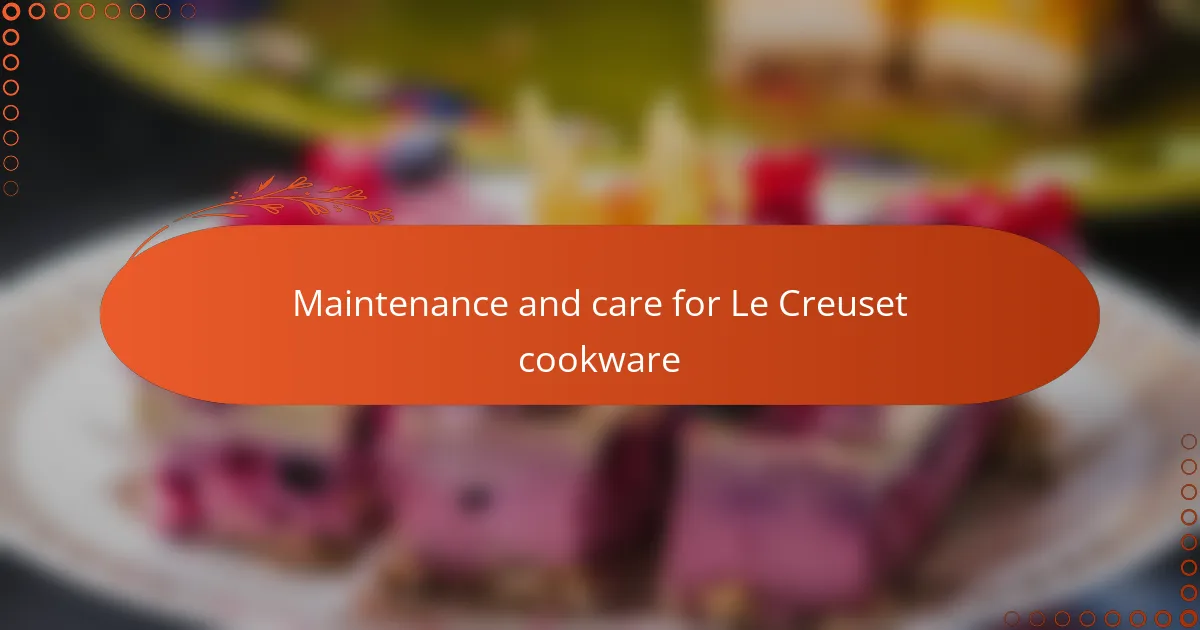
Maintenance and care for Le Creuset cookware
Taking care of Le Creuset cookware has been a bit like tending a cherished garden—I’ve learned that gentle, consistent maintenance keeps it thriving. For example, I always hand wash my pots with warm soapy water and avoid abrasive scrubbers that could dull the enamel. Have you ever noticed how such a simple habit preserves that signature glossy finish that first drew you to these colorful pieces?
One time, I neglected to dry my Dutch oven thoroughly, and a faint rust spot appeared on the rim—a gentle reminder that moisture doesn’t mix well with cast iron, even when protected by enamel. Since then, I make it a point to dry the cookware completely after washing and even let it air dry upside down to be safe. Doesn’t it feel good when your tools look as cared for as the food you cook in them?
I also treat my Le Creuset like an old friend by storing it carefully, avoiding stacking heavy pans on top that might chip the enamel. It’s small practices like these that have kept my pots looking vibrant and performing beautifully year after year. What’s the one maintenance tip you’ve found invaluable in keeping your cookware in top shape?

